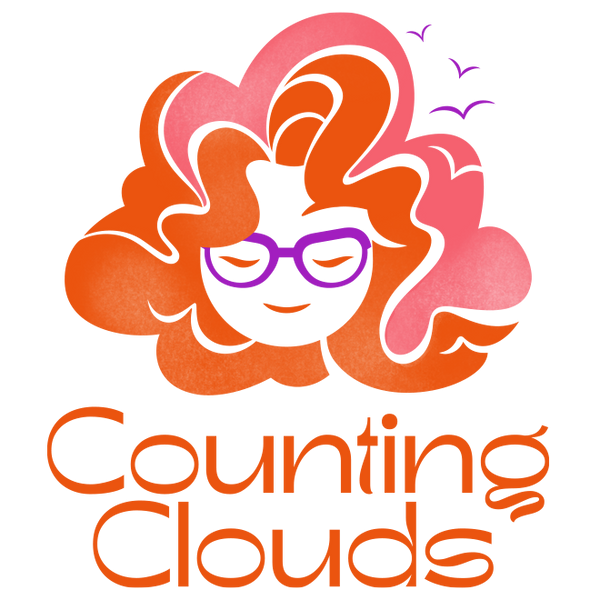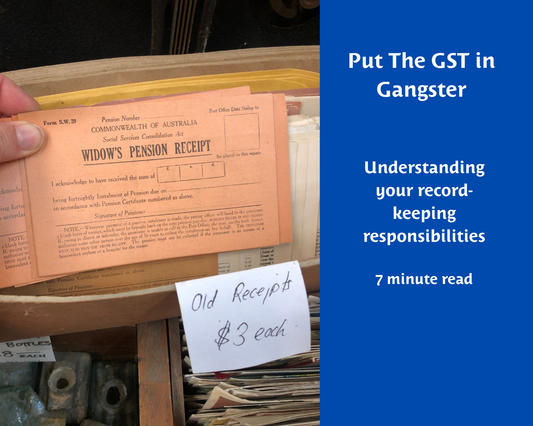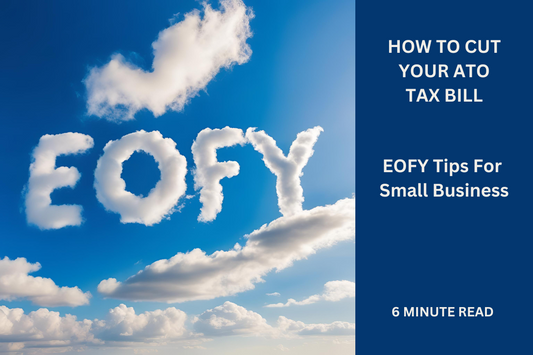Guides, Resources & Help To Make It All Easier
Employing staff can supercharge your business! It can empower you to achieve more, capitalise on new talents and work ON your business instead of purely IN it. You can also have fun collaborating with a group of fab people, like the Counting Clouds gang pictured!
By employing staff, you also become a caretaker of significant and practical aspects of your employees’ lives - Their income, their future financial security and their part in the tax system.
As bookkeepers and accountants, we can assist with obligations like Pay As You Go Withholding tax, payroll tax, Single Touch Payroll, superannuation and workers' compensation insurance.
We can also integrate Employment Hero software into your tech stacks. It incorporates industry awards that are kept up to date if changes are made by the Fair Work Commission, and it makes employee-related administration time efficient and stress free.
In regards to staying compliant with industrial relations laws and protecting yourself with employment contracts, liability always rests with you. It’s therefore very important to educate yourself and be aware of all your obligations and vulnerabilities as an employer. This article will guide you in the basics, point you to useful resources, and explain how we can help to make it all easier.
Pay As You Go Withholding Tax
Pay As You Go Withholding tax (PAYGW) must be withheld from your employees’ payments and reported and passed on to the Australian Taxation Office (ATO). You do this by registering for PAYGW with the ATO, submitting an Income Activity Statement (IAS) and making a payment to the ATO.
The frequency at which you need to do this depends on the annual amount of PAYGW you’re required to pay. If it’s $25K or less, it can be reported and paid quarterly. If it’s between $25K and $1million, it’s paid in a monthly cycle.
If you’re also required to lodge a Business Activity Statement (BAS) to report your GST activity, then PAYGW can be declared as part of the BAS.
If we take care of your PAYGW, we make sure you’re registered correctly with the ATO, reconcile your payroll data, prepare your IAS or BAS, send it to you for e-signing, and lodge it. Finally, we email you a clear and brief summary noting how much you need to pay the ATO. We can also process that payment for you if you like.
Payroll Tax
Payroll tax is collected by the state or territory in which your employees are located, and each one has different thresholds, rates and frequencies of reporting and paying. It only applies if your total taxable Australia-wide wages exceed a threshold, the lowest of which is Victoria’s at $900K per annum or $75K per month. You can check each state and territory’s threshold and rate at: https://www.payrolltax.gov.au/resources
If you’re registered for payroll tax in Victoria, you must report it monthly, even if your payroll only reaches the monthly threshold in 1 month out of 12. The exception to this is if the State Revenue Office (SRO) approves an annual cycle, which it generally only does if your tax payable for the previous financial year and the estimate for the following financial year are below a certain threshold. Since July 2021, that threshold has been $100K.
Other states and territories have different frequencies for reporting and paying payroll tax. You can find details about registering for payroll tax and frequency of payments across Australia at: https://business.gov.au/finance/taxation/payroll-tax
If you’re a Counting Clouds payroll client, our systems alert us if you hit a payroll tax threshold, at which point we get in touch with you to discuss the process. If we then handle it for you, we declare your total wages to the collecting body, are notified of the amount payable, and can also process that payment if you like.
Superannuation
The ATO requires you to pay your employees the super guarantee (SG). For the 2024-25 financial year, the SG amount is 11.5% of their earnings. This will increase to 12% from the 2025-26 financial year onwards.
As an employer, superannuation isn’t your money to hold onto or do with as you wish. It’s your employees’ money - It’s part of their income that is gathered by the ATO for their retirement.
An employee doesn’t need to earn a minimum amount to be eligible, and they can be eligible whether they’re full time, part time or casual, a permanent resident, temporary resident or a company director.
If they’re 18 years and over, you must pay the SG regardless of the number of hours they work. If they’re under 18 years of age, you need to pay it only if they work more than 30 hours in the week.
Payments must be made at least quarterly but can be paid more frequently. When employers don’t pay the minimum amount of SG to the correct fund by the due date, a super guarantee charge (SGC) applies.
You engage a clearing house to distribute contributions to your employees' funds on your behalf. A contribution is only considered paid on the date it's received by the super fund, not the clearing house, so you need to allow enough time for the clearing house to process it. However, if you use the ATO's Small Business Superannuation Clearing House (SBSCH) payments may be considered paid on the date they're received.
Some funds, awards and contracts require you to pay superannuation more often than quarterly, so you should check these to ensure contributions are paid on time.
The ATO runs a Super guarantee employer obligations online course. Alternatively, if we take care of your employees’ super payments for you, we pay the superannuation via the SBSCH or via Xero directly to the superannuation fund for you.
Single Touch Payroll
Single Touch Payroll (STP) is a mandatory obligation to report your employees' payroll data to the ATO at each pay run, using payroll software that is STP-compliant, like Xero. Salaries, wages, PAYGW and superannuation all need to be reported.
In the first 2 weeks of July, an annual STP Finalisation must be submitted to the ATO so that each employee receives their income statement in their MyGov account, prefilling in their tax return.
If we take care of your STP, we carry out an annual reconciliation to check that the correct amount of PAYGW has been withheld and passed on to the ATO. We also check that all employees have been paid what we've reported. We then submit an STP Finalisation for you.
WorkCover Insurance
Under Australian law, employers must have insurance to cover their employees with workers’ compensation in case they become sick or injured as a result of their work. Each state and territory is covered by a different scheme and different laws.
In Victoria, for example, WorkSafe runs the WorkCover scheme. At the beginning of each financial year, WorkSafe requires employers to provide their estimated rateable remuneration - This is the total amount they expect to pay their employees for the coming financial year in wages, salaries, superannuation, and other before-tax benefits. WorkSafe calculates the employer’s annual WorkCover premium based on this estimate, the employer’s industry’s standard rate, and their history of claims.
If you pay your premiums annually, you get a 5% discount by paying by August 19th or a 3% discount by paying by October 1st. The final due date is November 1st. Premiums can also be paid quarterly or monthly to even out your cash flow.
If, during the financial year, you realise your annual remuneration will have increased by 20% or more, you need to notify WorkSafe within 28 days to avoid a penalty. If during the last 2 MONTHS of the financial year, you realise there’ll be ANY increase between the estimate and actual remuneration, you must notify WorkSafe within 28 days to avoid a penalty. After receiving your revised estimate, WorkSafe will adjust your premium and bill you for the difference. If your actual remuneration is likely to be less than the estimate, you should notify WorkSafe of this as well.
When the financial year is over, employers need to confirm to WorkSafe the employee remuneration actually paid. Data matching technology is now enabling WorkSafe to pick up on underestimates and delayed updates very easily, and they’re charging more penalties than ever before. WorkSafe can charge an employer not only the difference between the premium they paid and what they should have paid, but also another 100% of this difference on top of that!
If we take care of your WorkCover, we gather and check figures for the past financial year’s payroll, payments to contractors who aren’t employees, super contributions and your number of employees. Based on these figures and the data in your Xero file to date, we estimate the current financial year’s wages. We email you a simple summary of these figures for review and approval. Once approved, we lodge them with WorkCover. Once WorkCover issues their invoice, we can process that payment too if you like.
If you have employees elsewhere in Australia, you need to be insured with the corresponding government insurance schemes in their states or territories. The processes will be similar, which we can handle for you as well.
Fair Work
You’ll hear the term ‘Fair Work’ a lot when it comes to industrial relations. To clarify, it can relate to two separate government bodies and an Act of Parliament:
- The Fair Work Act reformed Australia’s industrial relations system in 2009. It established Fair Work Australia, which was later renamed the Fair Work Commission.
- The Fair Work Commission is the national workplace relations tribunal. They set the national minimum wage, adjust and create modern awards, and deal with issues relating to job losses or dismissals.
- The Fair Work Ombudsman is the national workplace relations regulator. They provide information, education and advice on pay rates and workplace rights and obligations. They also enforce compliance with the Fair Work Act, modern awards and registered agreements.
Modern awards, often just referred to as ‘awards’, are legal documents outlining minimum conditions of employment, such as pay, hours of work, rosters, breaks, allowances, penalty rates and overtime. They vary depending on the industry and type of job. Employment arrangements must at least meet the requirements in the applicable award. The Fair Work Ombudsman’s Find my award online form can help you find the right awards for your employees.
Enterprise agreements and other registered agreements replace awards in some cases, but employers are involved in the process of negotiating an enterprise agreement, so if you had one, you’d know about it!
The Fair Work Act is currently undergoing changes as part of new Closing Loopholes laws. The changes come into effect at various points between December 2023 and August 2025.
The Closing Loopholes page outlines the changes effective August 2024, relating to:
- Employees’ rights to refuse employer contact outside working hours
- Independent contractor employment definitions, contracts and standards
- New rules for casual employees
Intentional underpayment of wages, commonly known as wage theft, has been in the spotlight for the past few years. It will become a criminal offence from January 2025.
Staying on the good side of all things ‘Fair Work’ is very important. You can find a set of guides about pay and wages, leave, starting employment, employment conditions, workplace problems and ending employment via the Fair Work Ombudsman.
There’s also Small Business Peak - A program designed to provide clarity on the recent and upcoming changes to industrial relations laws. It aims to be accessible and straightforward so that business owners can easily implement the new requirements in their workplaces. It’s a free website-based service with FAQs, fact sheets and compliance checklists.
Employment Contracts & Policies
Establishing a written employment contract when you hire a new employee is highly recommended. It can set out your expectations of their role, define their pay and conditions, and protect your confidentiality and intellectual property rights.
Human resources (HR) consultants and lawyers can assist with setting up employment contracts. There’s also a free Australian Government Employment Contract Tool to help you create one yourself. Your contracts should also be updated if the terms of employment change.
Having written HR policies is another way to let your employees know the conduct expected of them. These might relate to working from home arrangements, availability, communication channels, social media, cyber security, equal opportunity, health and safety, etc.
It’s common to feel uncomfortable with legal agreements and formality, but you’ll be glad to have these documents if you ever hit a bump in your employer-employee relationship. Hopefully they will provide enough clarity so that disputes can be entirely avoided.
Putting all this into practice: Employment Hero
We’ve been getting great results integrating Employment Hero Payroll and Employment Hero HR software into our clients’ tech stacks. Employment Hero gives you the peace of mind that you’re meeting your obligations to your employees, the ATO and Fair Work, and that you're taking care of the security of your business. It does this by:
- Including a library of awards that are kept up to date as changes become applicable
- Allowing you to set customised employment agreement rules to manage factors like time off in lieu and specific pay structures
- Facilitating STP reporting and superannuation payments
- Integrating accounting software like Xero
- Offering compliant HR policies
- Providing an HR advisory line
To save you admin time, it also automates data flow across rosters, timesheets and pay runs. Time in lieu, overtime, allowances, leave, rostered days off and salary sacrificing can be automatically calculated.
We tailor Employment Hero to your needs and provide training in how to utilise it. To ask us what it can do for you, email support@countingclouds.com.au
If you’d like to chat about anything else we’ve discussed above, please feel free to email us on hello@countingclouds.com.au



